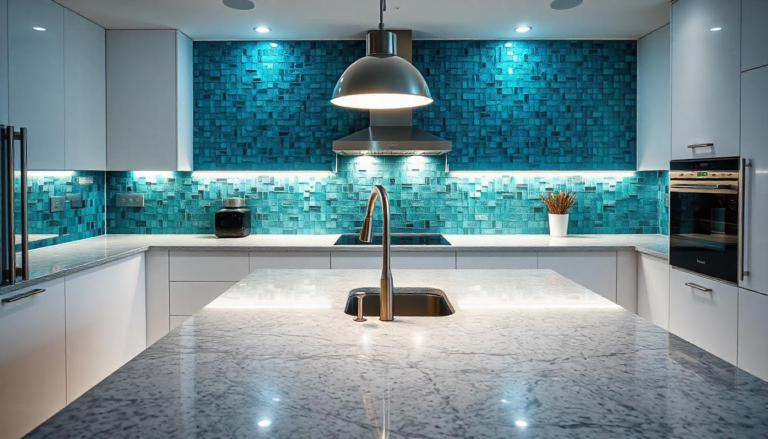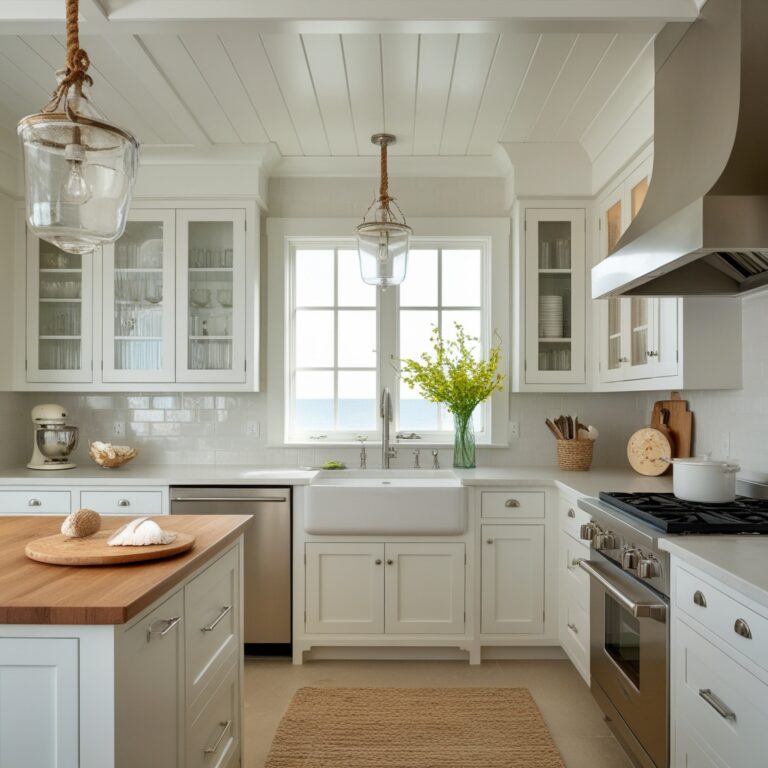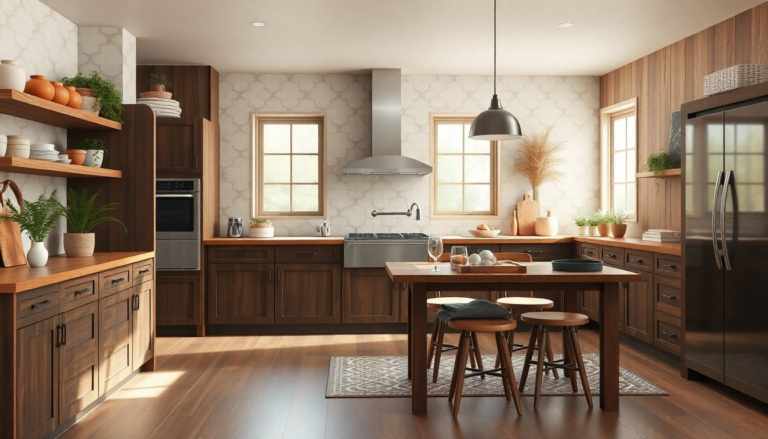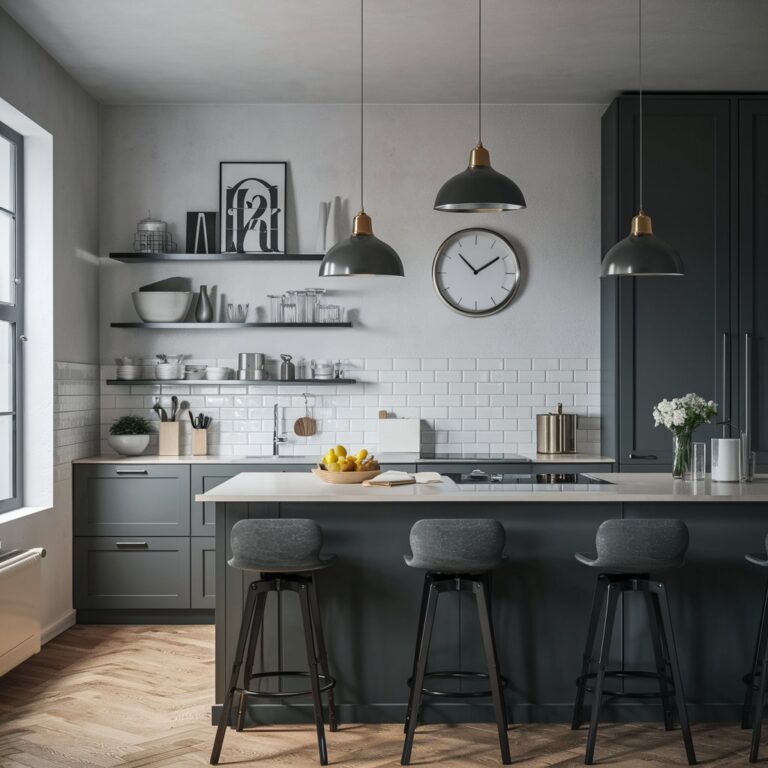41+ Green Kitchen Ideas [Sage, Olive & More]
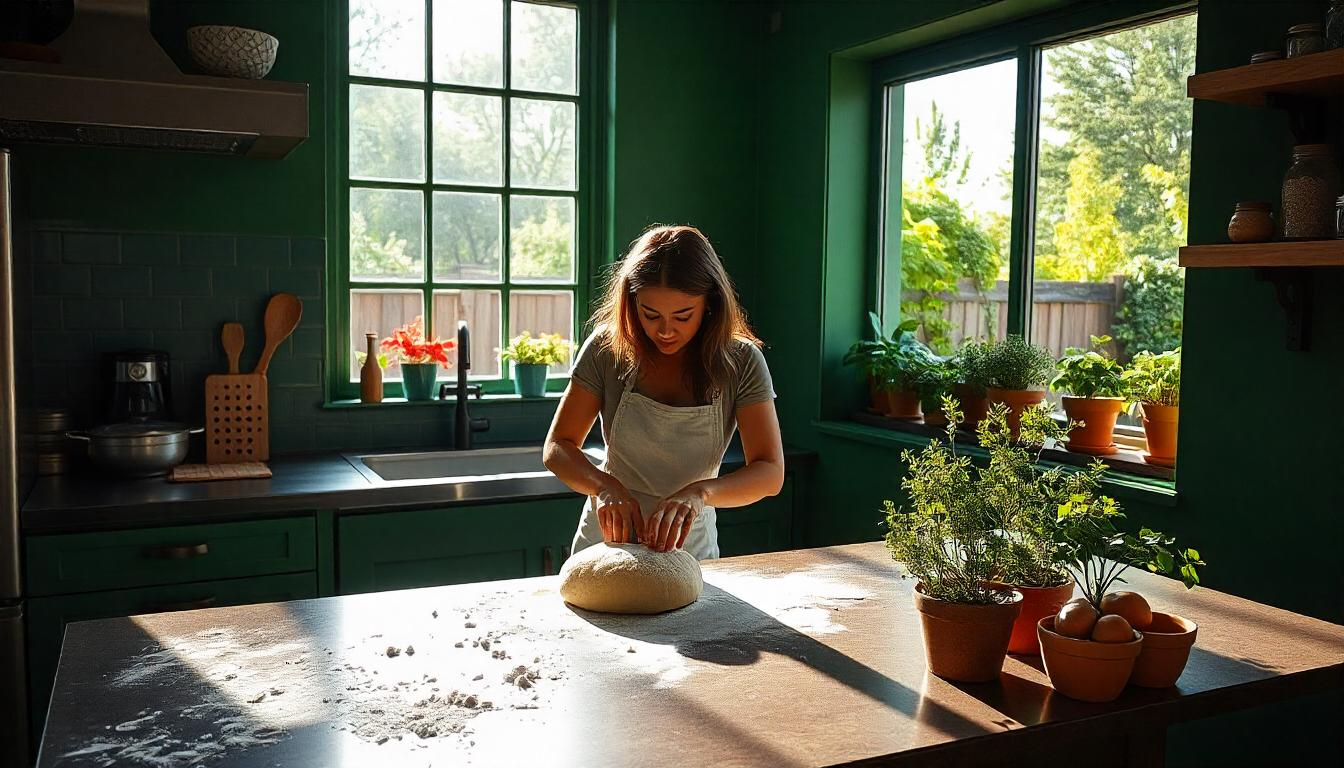
Imagine walking into a kitchen that feels like a breath of fresh air—calming, vibrant, and alive.
That’s the magic of green kitchens .
Whether you’re drawn to the earthy tones of sage or the boldness of olive, green is no longer just a color; it’s a lifestyle choice.
According to a 2023 survey by Houzz, over 65% of homeowners are leaning toward nature-inspired palettes when remodeling their kitchens.
And why not? Green symbolizes growth, renewal, and balance, making it the perfect backdrop for the heart of your home.
Green kitchens aren’t just trendy—they’re timeless. They bridge the gap between modern minimalism and cozy rustic charm.
The Psychology of Green: Why It Works in Kitchens
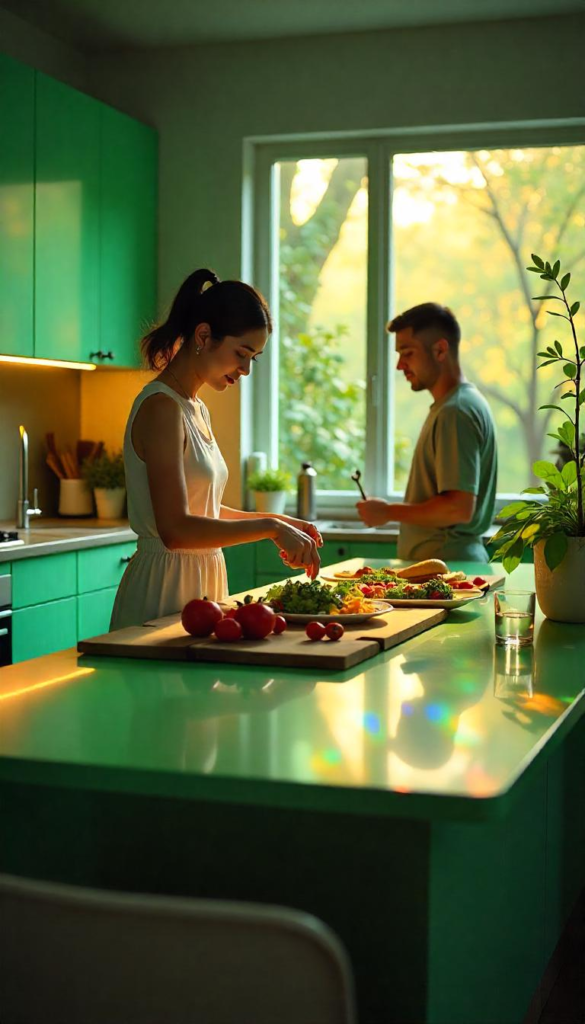
Before we get into specific ideas, let’s talk about why green works so well in kitchens.
Color psychology tells us that green has a calming effect on the mind, reducing stress and promoting relaxation.
In a room where meals are prepared, conversations happen, and memories are made, this is crucial.
Imagine chopping vegetables under the soft glow of sage-green cabinets—it’s like cooking in a forest glade!
But here’s the kicker: green isn’t one-size-fits-all. Different shades evoke different emotions.
For instance, sage green is subtle and soothing, perfect for creating a serene atmosphere.
On the other hand, olive green adds depth and richness, making your kitchen feel grounded and luxurious.
A study from the University of Texas found that people working in green environments reported 15% higher productivity levels .
So, if you’ve ever felt sluggish while prepping dinner, a green kitchen might be the pick-me-up you need.
Pro tip: If you’re worried green might feel too “outdoorsy,” pair it with neutral tones like white, beige, or gray.
This creates balance without overpowering the senses.
Sage Green Kitchens: The Epitome of Elegance
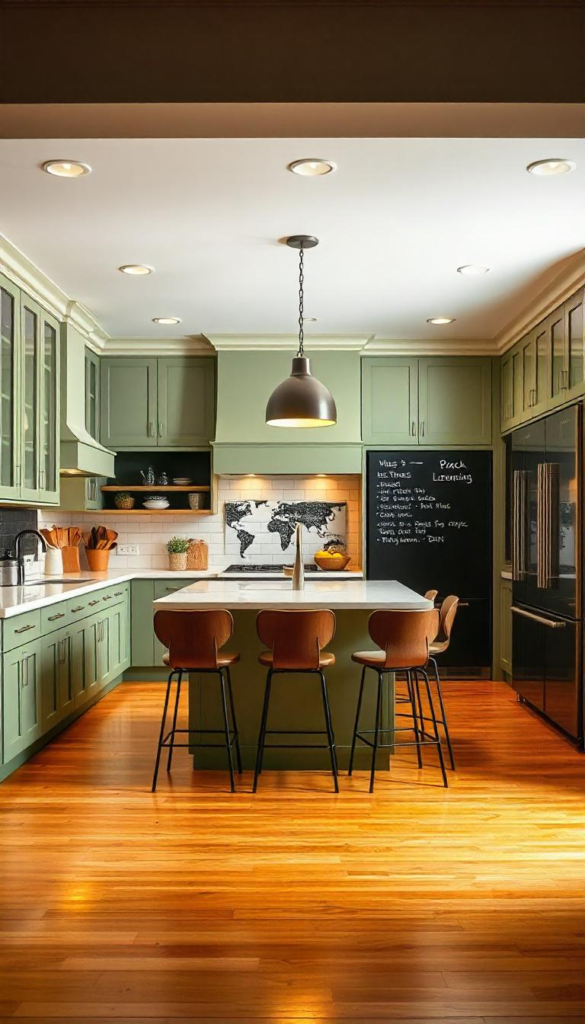
Let’s start with sage green , the darling of interior design trends.
Picture a misty morning in the countryside—that’s the vibe sage green brings to your kitchen.
It’s muted yet sophisticated, offering a soft pop of color without overwhelming the space.
How to Incorporate Sage Green
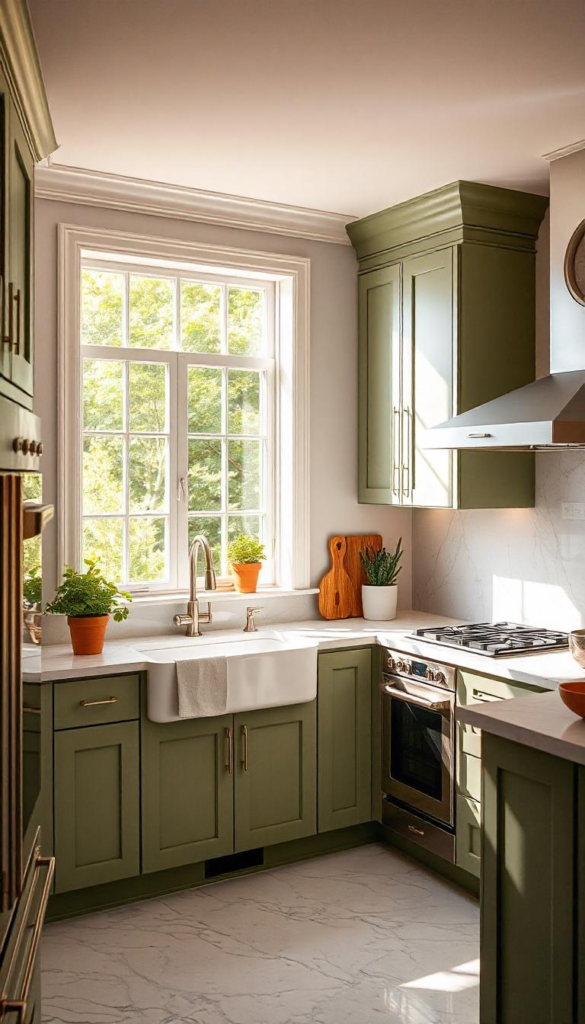
One of the easiest ways to introduce sage green is through cabinetry.
Imagine sleek, handle-less cabinets painted in this shade, paired with marble countertops.
It’s chic but understated, like wearing a cashmere sweater instead of sequins.
If you’re not ready to commit to full cabinets, try painting an accent wall or adding sage green tiles as a backsplash.
These small touches can transform the entire mood of your kitchen.
Pairing Sage with Other Colors
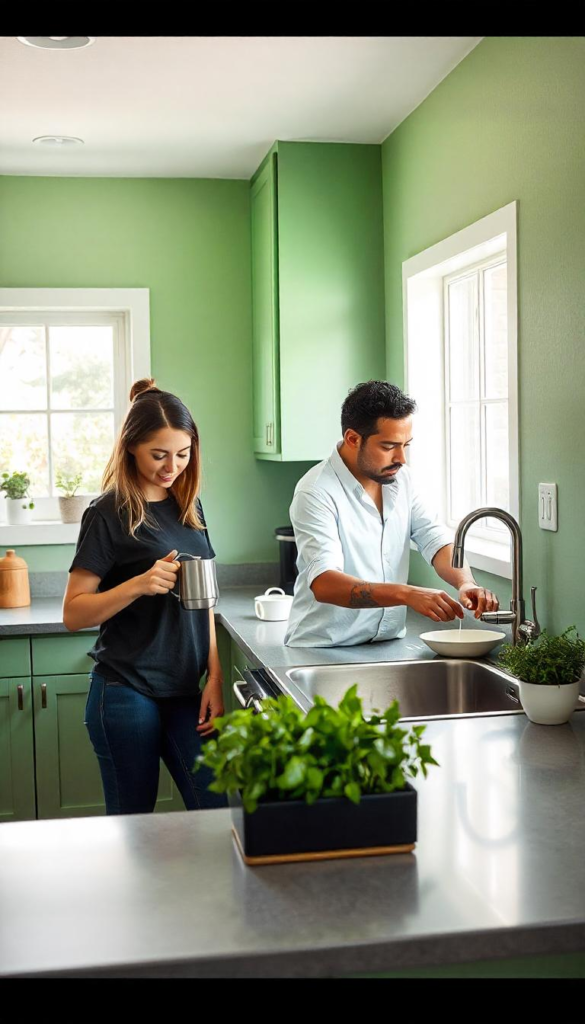
Sage green plays well with others.
Pair it with warm wood tones for a Scandinavian-inspired look, or go monochromatic with varying shades of green for a layered effect.
I once visited a friend’s house where she combined sage green walls with brass hardware and pendant lights.
The result? A kitchen that felt like stepping into a Pinterest board come to life.
Fun fact: Sage green was named Pantone’s “Color of the Year” runner-up in 2022, proving its staying power in the design world.
Olive Green Kitchens: Bold, Earthy, and Inviting
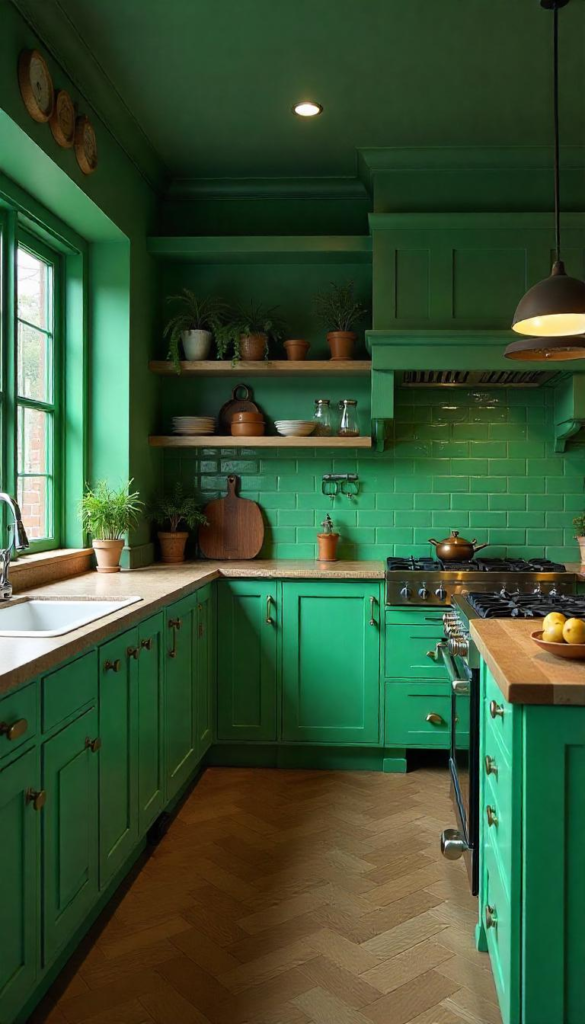
If sage green is the quiet introvert at a party, olive green is the confident extrovert who lights up the room.
This darker, richer shade adds drama and warmth, making it ideal for those who want their kitchen to make a statement.
Why Choose Olive Green?
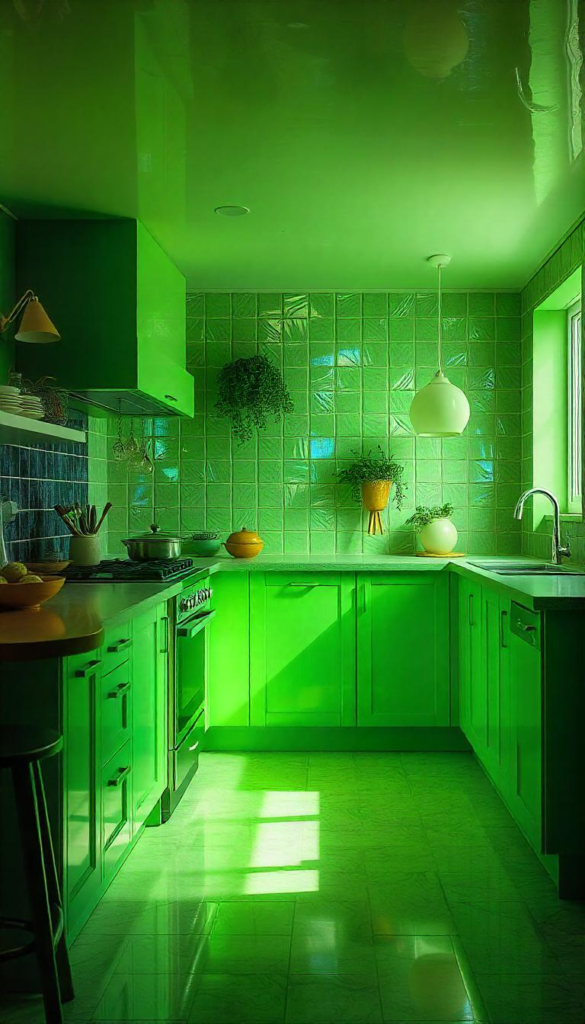
Olive green is versatile. It works beautifully in both traditional and contemporary settings.
In a farmhouse-style kitchen, olive green cabinets paired with shiplap walls create a cozy, lived-in feel.
In a modern kitchen, glossy olive green finishes paired with stainless steel appliances exude sophistication.
One homeowner I spoke to described her olive green kitchen as “a hug in a room.” She said it made her feel grounded after a long day at work.
Tips for Styling Olive Green

To keep olive green from feeling too heavy, incorporate plenty of natural light.
Large windows or skylights can brighten the space and highlight the depth of the color.
Another trick is to mix textures—think matte olive cabinets with a glossy subway tile backsplash or leather bar stools.
These contrasts add visual interest and prevent the room from feeling flat.
Did you know? Olive green is often used in high-end restaurants because it stimulates appetite while maintaining elegance. Why not bring that same vibe into your home?
Mint Green Kitchens: A Breath of Fresh Air
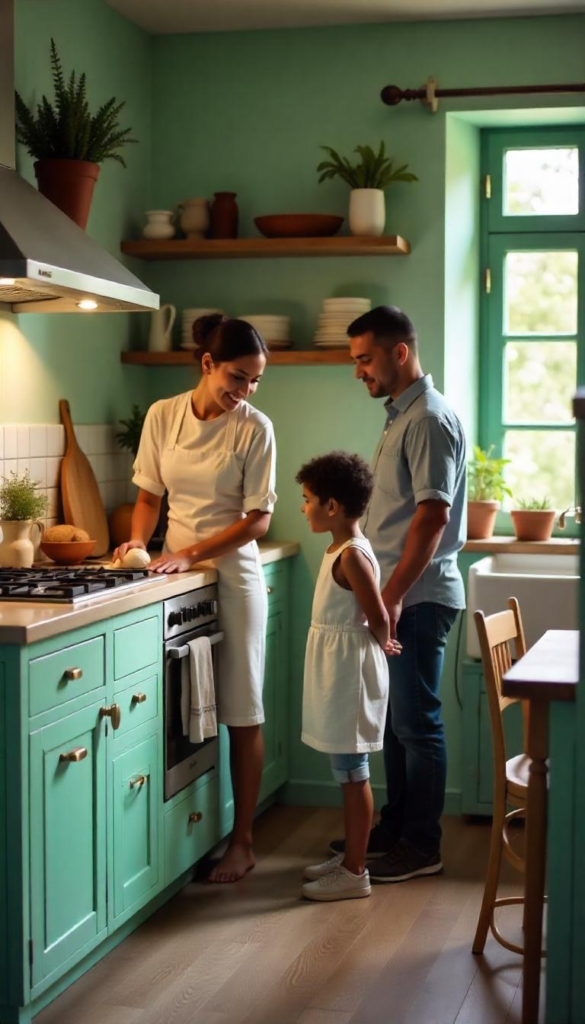
Now, let’s talk about mint green , the playful cousin in the green family.
If sage and olive are the grown-ups, mint green is the kid running around barefoot with ice cream dripping down their fingers.
It’s fun, refreshing, and full of personality.
When to Use Mint Green
Mint green is perfect for smaller kitchens or spaces that lack natural light.
Its light-reflective qualities bounce light around the room, making it feel larger and airier.
I remember visiting a tiny apartment in Brooklyn where the owner had painted her cabinets mint green.
Despite the limited square footage, the kitchen felt open and inviting.
Creative Ways to Use Mint Green
Don’t limit yourself to cabinets! Mint green appliances, like retro-style refrigerators or ovens, can become conversation starters.
You could also use mint green in unexpected places, such as the inside of open shelving or the ceiling.
These little surprises add whimsy and charm.
Quick stat: According to Zillow, homes with mint green accents sell for 2.1% more than those without.
Who knew a splash of color could boost your property value?
Forest Green Kitchens: Luxurious and Dramatic
For those who crave drama, forest green is your go-to.
This deep, jewel-toned shade is like slipping into a velvet blazer—it’s bold, luxurious, and unapologetically stylish.
Making Forest Green Work
Forest green works best in larger kitchens or spaces with high ceilings. Because it’s such a strong color, it needs room to breathe.
Consider pairing forest green lower cabinets with lighter upper cabinets or open shelving to break up the intensity.
Gold or copper hardware complements forest green beautifully, adding a touch of glamour.
Real-Life Inspiration
A few years ago, I helped a client redesign her kitchen using forest green.
We opted for a two-tone approach: forest green base cabinets and crisp white uppers.
The contrast was striking, and the addition of a large farmhouse sink tied everything together.
Her guests couldn’t stop raving about how “regal” her kitchen felt.
Pro tip: Add plants to a forest green kitchen. The green-on-green effect enhances the natural vibe and makes the space feel alive.
Emerald Green Kitchens: A Touch of Glamour
If you’re looking to channel your inner Gatsby, emerald green is the way to go.
This rich, saturated hue is synonymous with luxury and opulence.
It’s the kind of color that makes you want to sip champagne while whipping up hors d’oeuvres.
Where to Use Emerald Green
Emerald green is best suited for statement pieces, like an island or a feature wall.
Imagine a glossy emerald green island surrounded by white perimeter cabinets—it’s a showstopper.
Alternatively, use emerald green in accessories like bar stools, rugs, or even artwork.
Combining Emerald with Other Elements
To avoid going overboard, balance emerald green with metallic accents like gold or brass.
A gold faucet or chandelier can elevate the look and tie everything together.
My favorite example of this is a kitchen I saw online where the designer used emerald green tiles as a backsplash behind the stove.
Paired with gold grout, it looked like a piece of jewelry.
Stat alert: Emerald green kitchens have seen a 40% increase in popularity over the past five years, according to Architectural Digest.
Mixing Greens: Layering Shades for Depth
Who says you have to stick to just one shade of green? Mixing greens is like composing a symphony—each note (or shade) adds something unique to the overall harmony.
How to Mix Greens Successfully
Start with a dominant shade, like sage or olive, and layer in complementary greens through accessories or textiles.
For example, sage green cabinets could be paired with olive green bar stools and mint green dishware.
The key is to vary the tones and textures to create visual interest.
Personal Experience
I once experimented with mixing greens in my own kitchen.
I painted my cabinets sage green but added olive green curtains and mint green planters.
The result was a cohesive yet dynamic space that felt alive and personal.
Friends always comment on how “cozy” it feels, which is exactly what I wanted.
Adding Natural Elements: Wood, Stone, and Plants
No green kitchen is complete without natural elements.
After all, green is the color of nature, so it only makes sense to incorporate materials that echo its origins.
Wood Accents
Wood brings warmth and texture to a green kitchen.
Consider wooden countertops, floating shelves, or even a reclaimed wood accent wall.
These elements soften the look and add a rustic touch.
Stone Features
Stone, whether in the form of marble countertops or slate flooring, adds durability and elegance.
Pairing stone with green creates a timeless aesthetic that never goes out of style.
Bringing in Plants
Plants are the cherry on top of any green kitchen.
Not only do they enhance the color scheme, but they also purify the air and boost your mood.
Snake plants, pothos, and herbs like basil or rosemary are excellent choices.
Lighting Your Green Kitchen: Setting the Mood
Lighting can make or break a green kitchen. The right lighting enhances the color and creates the desired ambiance.
Types of Lighting
Recessed lighting provides general illumination, while pendant lights over the island or sink add focal points.
Dimmer switches are a game-changer, allowing you to adjust the brightness based on the time of day or occasion.
Color Temperature Matters
Opt for warm white bulbs (2700K-3000K) to complement green tones. Cooler bulbs can wash out the color and make the space feel sterile.
Budget-Friendly Green Kitchen Ideas
Not ready to splurge on a full remodel? No problem! There are plenty of budget-friendly ways to incorporate green into your kitchen.
Paint Your Cabinets
A fresh coat of paint can transform old cabinets into something new. Try sage or mint green for a subtle update.
Swap Out Hardware
New knobs and pulls in brass or black can instantly refresh your kitchen.
Add Green Accessories
Think dish towels, rugs, and vases. These small changes pack a big punch.
Final Thoughts: Embrace the Green Revolution
Green kitchens are more than just a trend—they’re a celebration of nature, creativity, and individuality.
Whether you choose sage , olive , or emerald , there’s a shade of green that’s perfect for you.
Remember, your kitchen should reflect your personality, so don’t be afraid to experiment and have fun.
So, what are you waiting for? Grab a paintbrush, roll up your sleeves, and let’s turn your kitchen into a green oasis. Trust me, once you go green, you’ll never look back.

